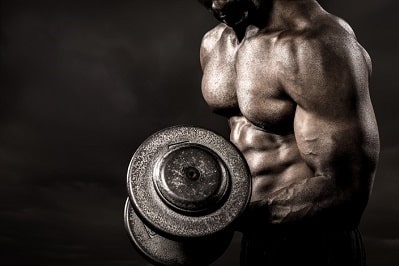
Where Is Testosterone Produced
Testosterone is not just for men; everyone needs it. Unfortunately, testosterone production does not always keep up with the demands of the body, especially as we age. That is why understanding where and how testosterone production occurs is crucial. Where is testosterone produced in the male and female bodies?
If you are a man, you may think that you know everything about testosterone production. After all, that is what your testes are for, right? Not entirely, your testes are also where your body produces and matures the sperm cells used to fertilize an egg for conception. Whether you are a male or female, your body produces additional testosterone in your adrenal glands.
How much testosterone is produced a day?
Most men produce an average of 4 to 7 milligrams of the androgen hormone testosterone each day. Much of that occurs during sleep, as we will discuss in the final section of this report. That is also why testosterone levels are their highest upon awakening in the morning. A male’s high morning level of testosterone is the reason for morning erections and heightened sexual desire first thing in the day. Women produce significantly less testosterone each day.
The body produces testosterone many ways, with the most significant being in the testicles and ovaries.
How Do Men Produce Testosterone?
Testosterone in the male body is an extremely complex hormone. Its levels peak during puberty, average out during the early and mid-twenties, and begin a slow decline before age thirty.
Where is testosterone produced and what regulates its secretion?
Roughly 95 percent of the testosterone in a man’s body comes from his testes – more specifically, the Leydig cells. The cycle of testosterone production is intertwined and reciprocal. Testosterone helps regulate the secretion of two essential hormones – luteinizing hormone (LH) and follicle-stimulating hormone (FSH). When the hypothalamus senses low testosterone levels in the bloodstream, it will send gonadotropin-releasing hormone to the pituitary gland to promote FSH and LH release into the bloodstream. In turn, LH stimulates testosterone production, with FSH helping with sperm production.
When testosterone is produced by the testes, a significant portion of it remains local to aid in spermatogenesis – the process of sperm cell maturation.
A small amount of testosterone floats freely in the bloodstream, ready to bind with androgen receptors on tissues throughout the body. Upon this binding, testosterone enters the cell to initiate actions for carrying out of its functions. Depending on the location of the receptor, testosterone may help with muscle building, bone formation, hair growth, red blood cell production, brain functions, and more.
Most testosterone in the bloodstream remains bound to one of two proteins – sex hormone-binding globulin (SHBG) and albumin – that will carry it along until it is needed.
Most testosterone production in men occurs in the testes and adrenal glands.
How Do Women Produce Testosterone?
Testosterone is a vital hormone for women as it helps to reduce the risk of osteoporosis by protecting bone mineral density. Where is testosterone produced and how does the production occur?
Testosterone produced in females comes primarily from peripheral tissues via androstenedione conversion (25 to 50 percent), the ovaries (25 to 50 percent), and the adrenal glands (25 percent). As with men, it is luteinizing hormone that stimulates testosterone production from the hormone progesterone in the ovaries. Later, some of that free testosterone will become estradiol – the primary type of estrogen.
Testosterone produced by ovaries enters the bloodstream where most of it binds to either albumin or SHBG. Only the free and albumin-bound testosterone are available for the androgen receptors to use. SHBG-bound testosterone cannot bind to receptors.
Women experience a fluctuation in testosterone levels throughout the month. Different stages of the menstrual cycle regulate testosterone production. Female testosterone levels rise during the follicular phase (first half of the menstrual cycle) and peak mid-cycle.
Female testosterone levels also begin to decrease slowly during adulthood but see a significant decline once menopause arrives. At that time, the ovaries stop producing hormones and the adrenal glands take over the majority of testosterone secretion.
Another aspect of testosterone production differs between men and women – females with higher body mass also have higher testosterone concentration than do women with lower body mass.
Female testosterone production occurs in peripheral tissue, ovaries, and adrenal glands.
How Does Sleep Influence Testosterone Production?
Much of the testosterone produced during sleep helps the body with some very basic functions. Along with human growth hormone, testosterone supports muscle repair and bone rebuilding while you sleep. Androgen receptors in the brain use testosterone at night to help with memory storage.
HGH and testosterone are the two most important hormones that the body produces while you sleep. If you do not get the recommended 7 to 9 hours each night, your body may come up short with hormone production.
Because testosterone and HGH both stimulate metabolic functions, adults with either or both these deficiencies tend to put on weight and run out of energy. When their levels are low, cortisol production increases, which inhibits sleep. That is why reducing stress is one of the best ways to increase testosterone levels.
For further information about where is testosterone produced, please contact our hormone clinic for a free consultation.
Significant testosterone production occurs at night while you sleep.

